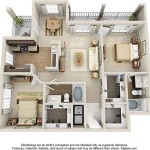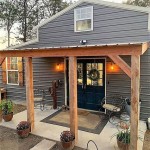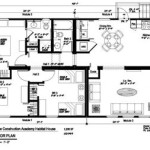Graph Paper for Floor Plans on Apple Devices: A Comprehensive Guide
Graph paper, traditionally a physical tool, has found a digital counterpart accessible on Apple devices. Its utility in creating floor plans stems from its grid-based structure, which provides a readily available framework for proportional representation and accurate measurements. When coupled with the processing power and versatility of Apple devices like iPads and Macs, graph paper becomes a dynamic medium for architectural sketching, interior design planning, and space visualization.
The shift from physical graph paper to digital versions has several advantages. Digital graph paper eliminates the need for physical storage, reduces paper waste, and allows for easy editing and sharing. Furthermore, Apple devices offer compatibility with various applications that enhance the graph paper experience, providing tools for drawing, dimensioning, and annotating floor plans with greater precision and efficiency. The following sections will explore the benefits, available applications, and best practices for utilizing graph paper for floor plans on Apple devices.
Understanding the Benefits of Digital Graph Paper for Floor Plans
Digital graph paper replicates the fundamental grid structure of its physical counterpart while adding functionalities impossible with traditional paper. The primary benefit lies in its scalability. Users can easily zoom in for detailed work on specific areas and zoom out for an overview of the entire floor plan. This feature is crucial for managing intricate details while maintaining a sense of the overall design.
Another significant advantage is the ability to easily correct mistakes. Unlike physical drawings, digital graph paper allows for quick and clean erasures or modifications. This iterative design process is less cumbersome and encourages experimentation. Users can readily try out different layouts and design options without the commitment and potential waste associated with redrawing physical plans.
Collaboration is also significantly enhanced. Digital floor plans can be easily shared with clients, contractors, or other stakeholders via email, cloud storage, or project management platforms. This facilitates efficient communication and feedback, ensuring that everyone is on the same page throughout the design and construction process. Furthermore, multiple users can potentially collaborate on a single floor plan simultaneously, depending on the capabilities of the specific application used.
Finally, digital graph paper often integrates with other software and hardware. Floor plans can be easily imported into CAD programs for more detailed drafting and 3D modeling. Compatibility with Apple Pencil on iPads provides a natural and intuitive drawing experience, mimicking the feel of using a traditional pencil on paper while offering the benefits of digital precision.
Exploring Available Applications for Graph Paper on Apple Devices
Numerous applications are available on the Apple App Store that cater to the needs of those using graph paper for floor plans. These apps range from simple grid-based drawing tools to more sophisticated architectural design software. The choice of application depends largely on the complexity of the project and the level of detail required.
For basic sketching and layout planning, several free and low-cost applications offer a straightforward graph paper interface. These apps typically provide tools for drawing lines, shapes, and text, allowing users to quickly create basic floor plan sketches. Examples of such apps include "Graph Paper" and "Grid Drawing Tool." These are suitable for initial concept development and rough estimations of space.
More advanced applications offer features such as layering, dimensioning, and customizable grid sizes. These tools are beneficial for creating more detailed and accurate floor plans. Some examples include "Procreate," "Concepts," and "Affinity Designer." While primarily designed for general illustration and design, these applications provide powerful tools that can be adapted for creating precise floor plans on graph paper grids.
For professionals requiring advanced features and integration with CAD software, applications such as "AutoCAD Mobile" and "Morpholio Trace" are valuable options. These apps offer tools for precise drawing, dimensioning, and annotation, as well as the ability to import and export CAD files. They provide a more professional-grade solution for creating detailed architectural drawings on Apple devices.
When selecting an application, it is important to consider factors such as ease of use, feature set, compatibility with other software, and cost. Many applications offer free trials or limited versions, allowing users to experiment and determine which tool best suits their needs. User reviews and online tutorials can also provide valuable insights into the capabilities and limitations of different applications.
Best Practices for Creating Floor Plans with Graph Paper on Apple Devices
To maximize the effectiveness of using graph paper on Apple devices for floor plans, several best practices should be followed. These practices ensure accuracy, efficiency, and clarity in the design process.
Firstly, establishing a consistent scale is essential. Before beginning to draw, define the scale to be used (e.g., 1 square = 1 foot). Adhering to this scale throughout the drawing process ensures that the floor plan is proportionally accurate and reflects the actual dimensions of the space. The scale should be clearly noted on the drawing for reference.
Secondly, utilize layers effectively. Many applications offer the ability to create multiple layers within a single drawing. This feature can be used to separate different elements of the floor plan, such as walls, furniture, and appliances. Using layers makes it easier to edit and modify individual elements without affecting other parts of the drawing. For example, one layer could be used for the structural walls, another for electrical wiring, and a third for furniture placement.
Thirdly, leverage the precision tools available within the application. Utilize features such as snapping to grid lines, angle constraints, and precise dimensioning tools to ensure accuracy in the drawing. These tools help to create straight lines, accurate angles, and precise measurements, resulting in a more professional and reliable floor plan.
Fourthly, annotate the floor plan clearly and concisely. Label each room and space with its intended function. Include dimensions for walls, doorways, and windows. Add notes to indicate the placement of electrical outlets, plumbing fixtures, and other important features. Clear and concise annotations make the floor plan easier to understand for both the designer and anyone else involved in the project.
Fifthly, save the floor plan in a suitable file format. Depending on the application used and the intended use of the floor plan, various file formats may be appropriate. Common file formats include PDF, JPEG, and PNG for sharing and viewing, and DWG or DXF for compatibility with CAD software. Choosing the right file format ensures that the floor plan can be easily accessed and used by others.
Sixthly, regularly back up the floor plan. Digital files are susceptible to data loss due to hardware failure, software errors, or accidental deletion. Regularly backing up the floor plan to a cloud storage service or external drive ensures that the work is not lost and can be easily recovered if necessary. Consider automating the backup process to minimize the risk of data loss.
Seventhly, utilize the Apple Pencil (if applicable) for a more intuitive drawing experience. The Apple Pencil offers pressure sensitivity and tilt support, allowing for more nuanced and expressive drawing. It can be used to create sketches, add shading, and write annotations with greater precision and control. The Apple Pencil can significantly enhance the drawing experience and improve the quality of the floor plan.
Eighthly, experiment with different design options. Digital graph paper makes it easy to try out different layouts and design ideas without the commitment of physical drawings. Utilize this flexibility to explore various possibilities and find the optimal solution for the space. Consider creating multiple versions of the floor plan with different design options and comparing them side-by-side to evaluate their strengths and weaknesses.
Ninthly, seek feedback from others. Share the floor plan with clients, colleagues, or friends and solicit their feedback. Fresh perspectives can often identify areas for improvement or suggest alternative design solutions that were not initially considered. Constructive criticism can be invaluable in refining the floor plan and ensuring that it meets the needs of all stakeholders.
Finally, continuously learn and improve. The field of architectural design is constantly evolving, with new tools and techniques emerging regularly. Stay up-to-date on the latest trends and best practices in floor plan design. Explore online resources, attend workshops, and experiment with new applications to continuously improve skills and knowledge. This ongoing learning process will enhance the ability to create effective and aesthetically pleasing floor plans using graph paper on Apple devices.

Draft Paper On The App

Draft Paper On The App

Draft Paper On The App

Large Graph Paper Template 10 Free Documents

Drawplan On The App

Sketch50 Tip 2 Adding A Grid In Procreate

5x5 Graph Paper Template For Pages Iworkcommunity

Arcsite Floor Plans And Cad On The App

How To Draw An Interior Floor Plan On The Ipad

Graph Paper Free Printables Superstar Worksheets
Related Posts








